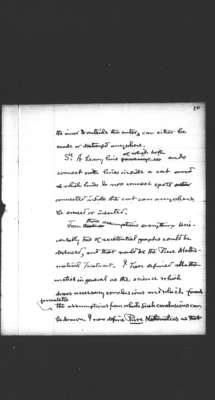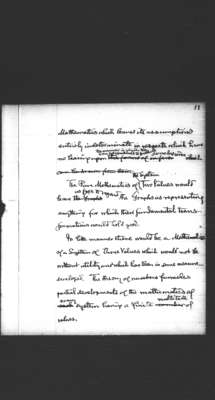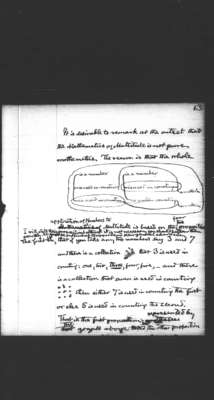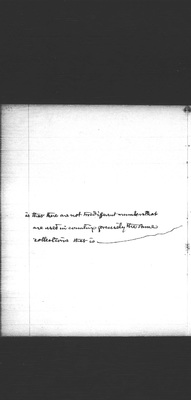Pages
11
10
the inner to outside the outer, can either be made or destroyed anywhere.
5th: A heavy line of which both ends connect with lines inside a cut and which lines do not connect spots connected inside the cut can anywhere be erased or inserted.
From these assumptions everything universally true of existential graphs could be deduced, and that would be the Pure Mathematical treatment. I have defined Mathematics in general as the science which draws necessary conclusions and which formulates the assumptions from which such conclusions can be drawn. I now definite Pure Mathematics as that
12
11
Mathematics which leaves its assumptions entirely indeterminate in respects which have no bearing upon the manner in which they can be combined to produce conclusions.
The Pure Mathematics of the System Two Values would leave us free to regard the Graphs as representing anything for which their fundamental transformations would hold good.
In like manner there would be a Mathematics of a System of Three Values which would not be without utility and which has been in some measure developed. The theory of numbers furnishes partial developments of the mathematics of every system having a finite number multitude of values.
13
12
I beg you I particularly to call your attention to my use of the word Multitude. I never use this word to mean a Collection or Plural. I always use it as an abstract noun denoting that character of a Collection which makes it greater than some collections and less than others. Thus, twoness, tenness, three hundred-and-sixty-five-ness, are individual Multitudes, as I use the word.
At the very outset of the study of the logic of mathematics our attention is forced to the subject of Multitude. Everybody knows that there is a Mathematics of Multitude; and I am going this evening to tell you some elementary things about it that you probably do not know.
14
13
It is desirable to remark at the outset that the Mathematics of Multitude is not pure mathematics. The reason is that the whole [diagram] application of Numbers to Multitude is based on the two four propositions. I will state these propositions although it is not necessary you should follow them exactly. It will be sufficient to apprehend their general character. The first is, that if you take any two numbers say 3 and 7 and there is a collection [5 dots?] that 3 is used in counting: one, two, three, four, five,— and there is a collection that seven is used in counting [9 dots] then either 7 is used in counting the first or else 5 is used in counting the second. That is the first proposition represented by the graph above and the other proposition




